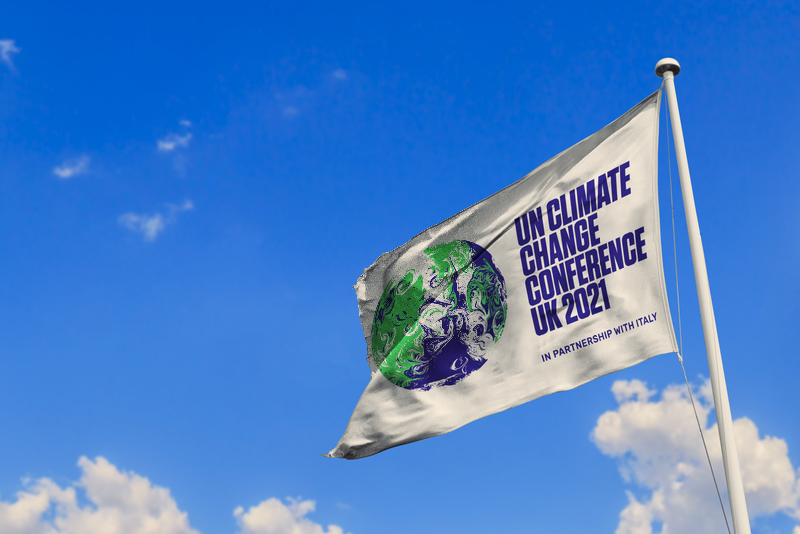
The disastrous aspects of climate change have been talked up to fever pitch as President Joe Biden and other world leaders gather in Glasgow, Scotland, for the United Nations COP26, the 26th world summit and conference to slow down climate change.
There is a lot of skepticism about the conference’s ability to deliver useful outcomes but one thing is already clear. The largest burden of climate catastrophes will fall on the world’s poorest populations where the majority are already living on less than $5 a day, exacerbated by inefficient health systems and inadequate nutrition.
U.N. Secretary General António Guterres says nations must find ways to embrace the transformational changes necessary to limit warming as much as possible. “We owe this to the entire human family. There is no time for delay and no room for excuses.”
The UN’s Intergovernmental Panel on Climate Change says humans have altered the environment at an “unprecedented” pace and catastrophic impacts lie ahead unless the world rapidly and dramatically cuts greenhouse gas emissions.
Biden has billed the conference as the stage upon which he will restore credibility to US leadership of world affairs, including multilateral cooperation to tackle common problems after the dark years of former President Donald Trump.
He and the UN have repeatedly asserted that mitigating climate change is a global challenge that all the world’s countries must handle together.
But Biden is not expected to make clear and concrete commitments to use American wealth, technology and power to help save the 6 billion people in developing countries who are too poor and technologically backward to protect themselves.
in his usual colorful manner, British Prime Minister Boris Johnson has urged world leaders to stop treating the earth like “some bouncy plastic romper room against which we can hurl ourselves to our heart’s content.”
Almost all the talk in mainstream media and among major climate activists, including the recent gains of green parties, concerns mostly Europe, US and other richer countries. There is little understanding of how poor people live around the world and what is needed apart from money to help them cope.
The main thrust at COP26 is on obtaining detailed promises from each country about reducing greenhouse gas emissions to voluntarily-set national targets, including concrete actions it will take to fulfil its pledges. The overall goal is to keep global temperature increases to 1.5°C above pre-industrial levels by 2050. Helping the most vulnerable people is lower down the agenda.
Many experts are billing COP26 as a last chance to avert catastrophic hurricanes, droughts, heat waves and other disasters. That is entirely true. It is not possible to negotiate with the underlying physics which is unquestionably solid.
But the conference is about the politics of climate change not the science.
The outlook for the poor is not hopeful, given the current state of geopolitical tensions and the inability of rich governments to cooperate even on an ongoing catastrophic peril like the coronavirus pandemic.
The conference may turn into a networking event for rich country climate activists rather than a pivotal event where the world’s poor get the attention and help they deserve to mitigate climate change impacts on their lives.
In arguing for a massive push against fossil fuels and adoption of electric transportation, these groups forget that most people outside rich countries do not receive stable electricity 24 hours a day and seven days a week.
Hundreds of millions still cut bushes every day for wood to light fires at home to cook food. Gas cylinders for cooking are a great upgrade for them. Insufficient electric light prevents children from studying after school and older persons suffer worsening eyesight.
Industries cannot run because of intermittent electricity. Generating enough through alternate sources like wind and solar is almost impossible because of high production and transmission costs and absence of batteries for storage.
Everything will have to be imported expensively from the US and other rich countries, especially as both Washington and Brussels are now campaigning for political reasons against purchases of cheaper inputs from China.
Even if the poorer nations were to get $100 billion a year in financial aid, it would spread thinly over more than 6 billion people in 150 countries.
More importantly, the poor countries will not be able to spend the funds productively if the richer Western nations continue to see them as markets for exports instead of allowing them to start manufacturing locally. Many developing countries have remained poor after decades of independence from Western colonial rulers because they have not been able to set up indigenous manufacturing for commonly used products.
In a domain as fundamentally important for people’s lives as energy, the transition away from fossil fuels towards new low carbon technologies cannot be made without manufacturing most of the necessary materials at home, especially the parts required for maintenance.
Without locally made materials, adapting their current economic infrastructures to the new energy sources may be impossible before 2050, as climate experts demand.
Photo 185951173 / Climate Change © Rafael Henrique | Dreamstime.com
















